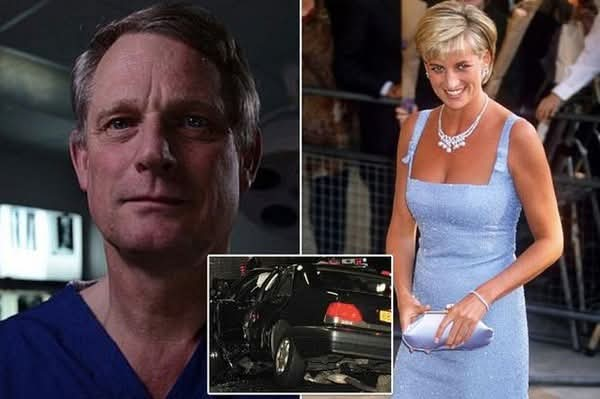NFL
Royal News Breaking News: The forensic doctor reveals the true reason behind Princess Diana’s passing: “Her injury was very small and thin, not caused by the car…” Nearby car dealerships

Royal News
Breaking News: The forensic doctor reveals the true reason behind Princess Diana’s passing: “Her injury was very small and thin, not caused by the car…”
Nearby car dealerships
In a recent revelation that has rekindled public curiosity and sorrow over the tragic passing of Princess Diana, renowned forensic pathologist Dr. Richard Shepherd has shared what he believes was the true reason behind her untimely death. According to Dr. Shepherd, Diana’s passing was caused by a seemingly minor injury, one that under different circumstances might not have been fatal. His statement, “It was a very small injury, yet she was so unlucky,” highlights the cruel twist of fate that ended the life of one of the most beloved figures of the 20th century.
Princess Diana’s death on August 31, 1997, shocked the world. Following a car crash in the Pont de l’Alma tunnel in Paris, the initial reports attributed her death to the severe injuries sustained in the high-speed collision. However, Dr. Shepherd’s recent statement has brought new insight into the tragic details surrounding her last moments, revealing that her death may have been preventable if not for a small but fatal complication.Nearby car dealerships
Dr. Shepherd explained that Diana’s injuries, while serious, included one small but critical wound that ultimately led to her passing. According to the pathologist, this seemingly insignificant injury involved a tiny tear in a vein located near her heart, which caused internal bleeding that proved fatal. In an unfortunate twist, this small wound was both highly unusual and challenging to treat in the chaotic aftermath of the accident. Had the tear been identified sooner or positioned differently, Diana might have survived the crash with minor complications.
The revelation underscores how fate played a merciless role in Diana’s accident, leaving both medical professionals and the public questioning what might have been. Dr. Shepherd’s explanation offers a stark reminder of how fragile life can be, with outcomes sometimes hinging on small, unpredictable factors. His insights are especially poignant as they reinforce the idea that Diana’s death was not a straightforward consequence of the accident but rather a tragic sequence of events that culminated in an unlikely and devastating outcome.
Dr. Shepherd, who has examined many high-profile cases, remarked that Diana’s injury was one of the rarest and most unfortunate instances he has encountered. His detailed knowledge of the case provides a scientific perspective on a tragedy that has inspired countless conspiracy theories over the years. For him, the accident serves as a reminder of the delicate line between life and death, and the complex interplay of chance, injury, and medical intervention.
For the public and Diana’s family, Dr. Shepherd’s account may offer some closure, shedding light on the heartbreaking reality of her final moments. Prince William and Prince Harry, who have both publicly shared the impact of their mother’s death on their lives, may find solace in knowing that her passing was, in essence, a tragic accident rather than a deliberate act. Understanding the true cause of her death allows them, and the world, to mourn her loss with greater clarity.
As the world reflects on this new insight into Diana’s passing, Dr. Shepherd’s words are a reminder of the unpredictable nature of life. His revelations reinforce the legacy of Princess Diana—a woman remembered not for the tragic details of her death but for her compassion, kindness, and enduring impact on the world.












